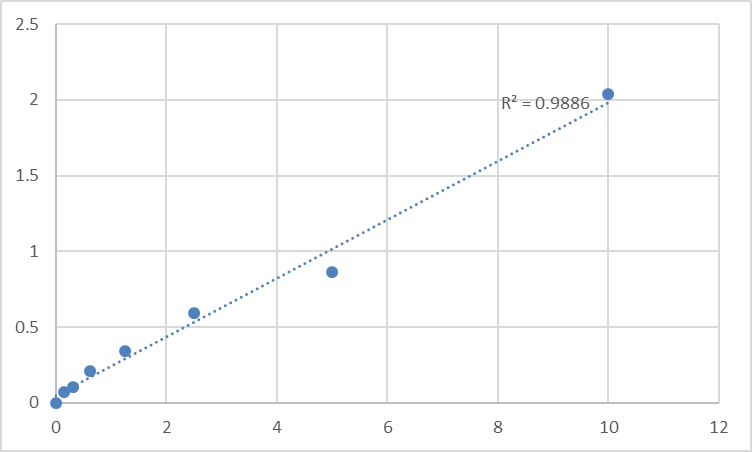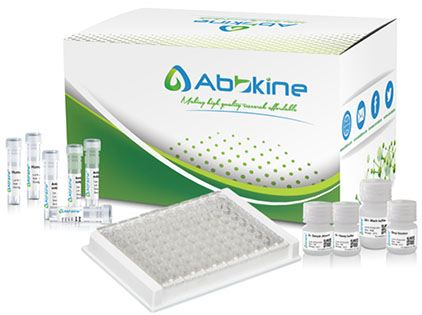| Product name | Mouse Soluble Toll-like Receptor 9 (sTLR9/sCD289) ELISA Kit |
| Reactivity | Mouse |
| Applications | ELISA |
| Applications notes | This Mouse Soluble Toll-like Receptor 9 (sTLR9/sCD289) ELISA Kit employs a two-site sandwich ELISA to quantitate TLR9 in samples. An antibody specific for TLR9 has been pre-coated onto a microplate. Standards and samples are pipetted into the wells and anyTLR9 present is bound by the immobilized antibody. After removing any unbound substances, a biotin-conjugated antibody specific for TLR9 is added to the wells. After washing, Streptavidin conjugated Horseradish Peroxidase (HRP) is added to the wells. Following a wash to remove any unbound avidin-enzyme reagent, a substrate solution is added to the wells and color develops in proportion to the amount of TLR9 bound in the initial step. The color development is stopped and the intensity of the color is measured. |
| Detection method | Colorimetric |
| SampleType | Cell culture supernatants, Other biological fluids, Plasma, Serum |
| Assay type | Sandwich ELISA (quantitative) |
| Assay duration | Multiple steps standard sandwich ELISA assay with a working time of 3-5 hours. It depends on the experience of the operation person. |
| Alternative | TLR9; CD289; |
| Kit components | • Mouse Soluble Toll-like Receptor 9 microplate • Mouse Soluble Toll-like Receptor 9 standard • Mouse Soluble Toll-like Receptor 9 detect antibody • Streptavidin-HRP • Standard diluent • Assay buffer • HRP substrate • Stop solution • Wash buffer • Plate covers |
| Features & Benefits | Mouse Soluble Toll-like Receptor 9 (sTLR9/sCD289) ELISA Kit has high sensitivity and excellent specificity for detection of Mouse TLR9. No significant cross-reactivity or interference between Mouse TLR9 and analogues was observed. |
| Calibration range | Please inquire |
| Limit of detection | Please inquire |
| Usage notes | • Do not mix components from different kit lots or use reagents beyond the kit expiration date. • Allow all reagents to warm to room temperature for at least 30 minutes before opening. • Pre-rinse the pipet tip with reagent, use fresh pipet tips for each sample, standard and reagent to avoid contamination. • Unused wells must be kept desiccated at 4 °C in the sealed bag provided. • Mix Thoroughly is very important for the result. It is recommended using low frequency oscillator or slight hand shaking every 10 minutes. • It is recommended that all samples and standards be assayed in duplicate or triplicate. |
| Storage instructions | The unopened kit should be stored at 2 - 8°C. After opening, please store refer to protocols. |
| Shipping | Gel pack with blue ice. |
| Precautions | The product listed herein is for research use only and is not intended for use in human or clinical diagnosis. Suggested applications of our products are not recommendations to use our products in violation of any patent or as a license. We cannot be responsible for patent infringements or other violations that may occur with the use of this product. |
| Background | The protein encoded by TLR9 is a member of the Toll-like receptor (TLR) family which plays a fundamental role in pathogen recognition and activation of innate immunity. TLRs are highly conserved from Drosophila to humans and share structural and functional similarities. They recognize pathogen-associated molecular patterns (PAMPs) that are expressed on infectious agents, and mediate the production of cytokines necessary for the development of effective immunity. The various TLRs exhibit different patterns of expression. TLR9 is preferentially expressed in immune cell rich tissues, such as spleen, lymph node, bone marrow and peripheral blood leukocytes. Studies in mice and human indicate that this receptor mediates cellular response to unmethylated CpG dinucleotides in bacterial DNA to mount an innate immune response. |
| Gene ID | 81897 |
| Alternative | TLR9; CD289; |
| Accession | Q9EQU3 |

Fig.1. Mouse Soluble Toll-like Receptor 9 (sTLR9/sCD289) Standard Curve.

Fig.2. Abbkine ELISA kit is series of sandwich ELISA to quantitate specific protein in samples.
You must be logged in to post a review.
Reviews
There are no reviews yet.